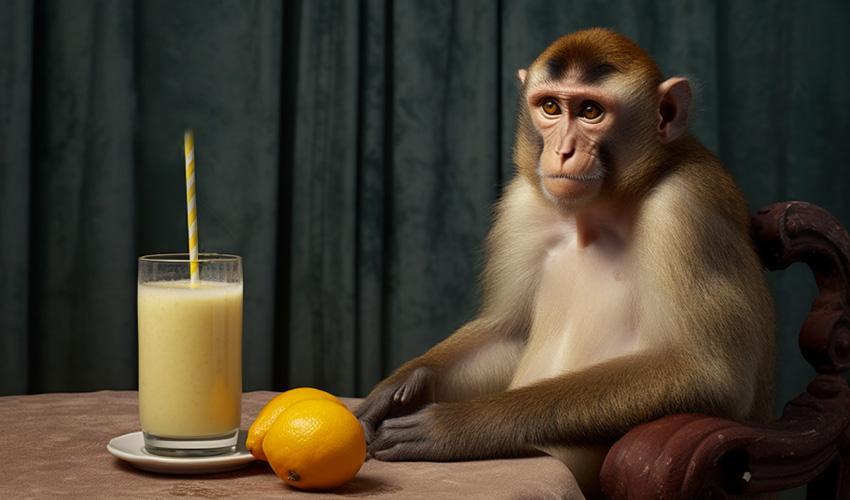
An Experiment With Monkeys to Understand How We Choose Between Goods of Different Value
IGIER VISITING STUDENT NICOLAS SOURISSEAU REPORTS ON A SEMINAR WITH CAMILLO PADOA SCHIOPPA (WASHINGTON UNIVERSITY)Economics has long sought to understand how individuals make decisions. Early economists like Adam Smith believed that choices involve assigning values. To decide between two options, people assign values to each and compare them. While standard economic theory has downplayed the concept of value, fields such as behavioral economics have developed theories based on this concept. During his IGIER seminar Neuronal mechanisms underlying economic choices, Professor Camillo Padoa-Schioppa (Washington University in St. Louis) explained how values are explicitly represented in the brain.
To apply the behavioral paradigm of the neuronal representation of value used in Prof. Padoa-Schioppa's experiments, we need some measure of value. The experiments involved monkeys choosing between two different goods, such as fruit juice and tea, with varying quantities. One notable observation was the presence of a trade-off between goods and quantities. The monkeys would choose the product they valued less if a higher quantity compensated for it compared to the other good. By determining the ratio at which the monkey becomes indifferent, researchers could identify the relative value of the goods for each monkey.
By examining the groups of activated neurons while the monkeys made choices, scientists discovered that decision-making primarily occurs in the orbitofrontal cortex (OFC). Neuronal activity was quantified in terms of firing rate, which is a measure of how fast neurons send electrical signals to communicate information in the brain. The trials were separated based on the type of offers, and it was observed that neuronal activity depended on the choice to be made. Specific groups of neurons were found to encode the value of one good, while others encoded the value of the other. The research team also identified two additional groups of neurons involved in the decision process: one group activated in the presence of one of the goods, irrespective of the quantities, and another group that seemed to compute the value of the chosen good, independent of the specific good itself.
Thus, two groups of neurons serve as the input of the decision process by computing the value of each good, while the other two groups serve as the output by choosing the best offer and computing its value. Overall, choices depend on both objective characteristics, such as the commodity, quantity, or associated risk, and subjective traits like motivation, patience, or risk attitude. Neurons assign different weights to each characteristic when computing the offer value. These findings suggest the existence of a circuit of neurons involved in decision-making, although this theory remains a working hypothesis.
What happens to the neurons that encode the value of a bundle containing apples when they are not part of the decision context? According to Prof. Padoa-Schioppa, the answer lies in cerebral plasticity. Neurons have the ability to "recycle themselves" and encode the value of other goods. However, the encoding role of the neurons remains unchanged.
Another related issue is range adaptation, which implies that as the quantity range of a good increases, the difference in perceived value between two quantities becomes smaller. Therefore, this mechanism suggests that by expanding the range of prices on display, sellers may be able to influence consumers to purchase more expensive items. However, the experiments showed that the monkeys' choices remained robust to range variations, suggesting that another element of the neuronal circuit compensates for range adaptation. The central hypothesis is that the inefficiency of synapses, the neuronal connections, compensates for this phenomenon.
So, what is the purpose of range adaptation? It serves efficiency. To understand this, we need to define the optimality of the decision process. The coding of offer values is considered optimal if it ensures maximal expected payoff. According to the model used by the research team, complete range adaptation is a necessary condition for achieving maximal expected payoff.
Prof. Padoa-Schioppa argued that values can be used for various cognitive functions, and observing a value signal does not necessarily imply involvement in a choice. To test for causality, the research team attempted to influence the monkeys' decisions by artificially activating specific neurons using electricity. They successfully biased the monkeys' choices, providing evidence that the described circuit plays a causal role in decision-making.
As previously stated, recent research suggests that the groups of neurons mentioned throughout the article, located in the OFC, are part of a dynamic circuit that generates binary choices. However, the exact organization of the circuit is yet to be fully understood. Recording neuronal activity has become more accessible for neuroscientists, but recording neuronal connectivity remains challenging, especially with monkeys.
To find evidence of neuronal connections, researchers have turned to mice. While mice are further from humans and their behavior is less sophisticated than that of monkeys, they offer advantages such as fast reproduction and access to mice with specific genetic mutations through genetic selection. Inactivation of the mice's OFC disrupted the decision process, providing insights into neuronal connections.
In conclusion, Prof. Padoa-Schioppa noted that the organization of the neuronal circuit still needs further exploration. Nonetheless, research in this area shows promising progress. One of his future research projects involves stimulating very small groups of neurons that serve the same purpose and observing how their activation affects the activity of other neurons in the circuit. This could be used as a proxy for studying connectivity.
by Nicolas Sourisseau
